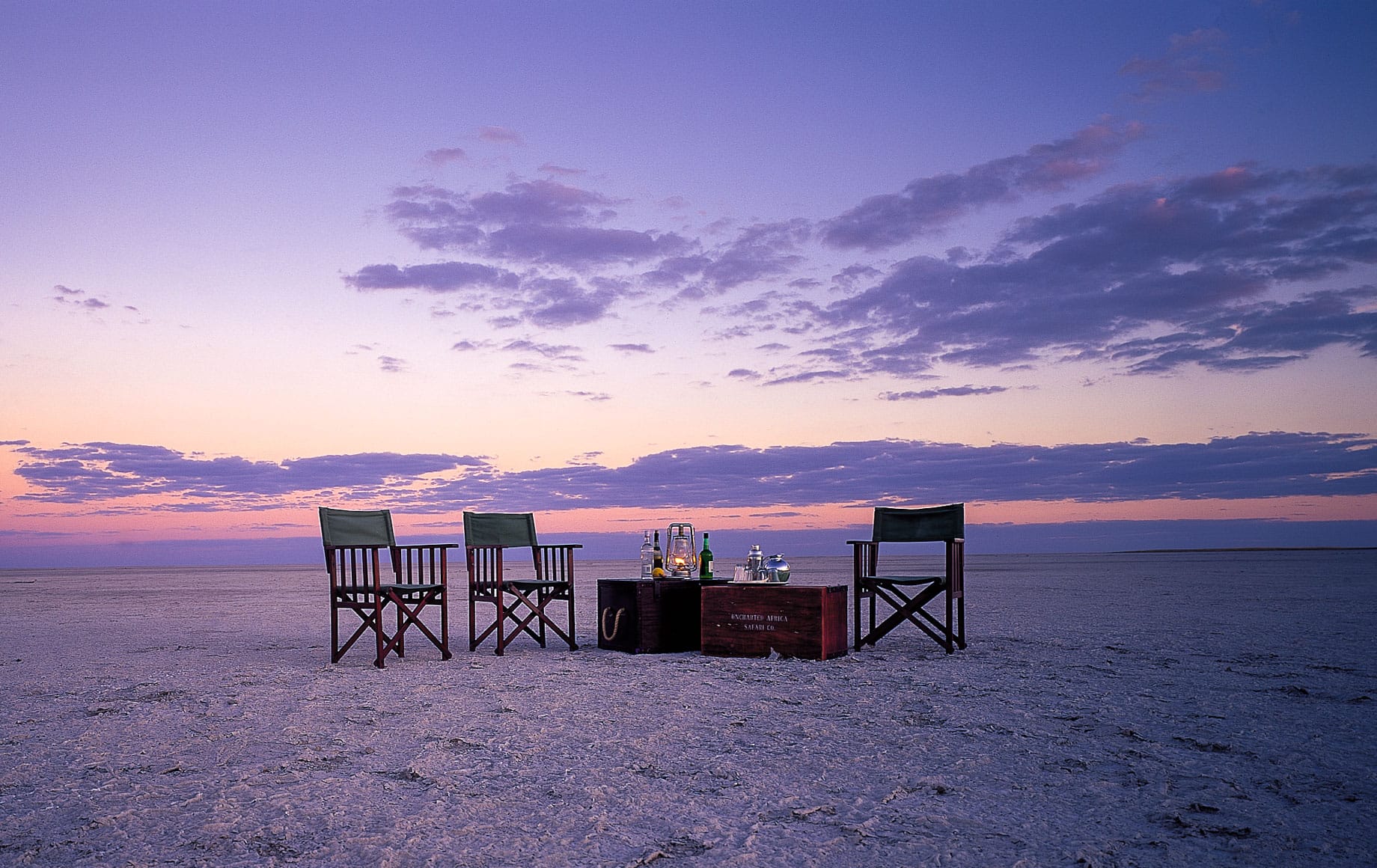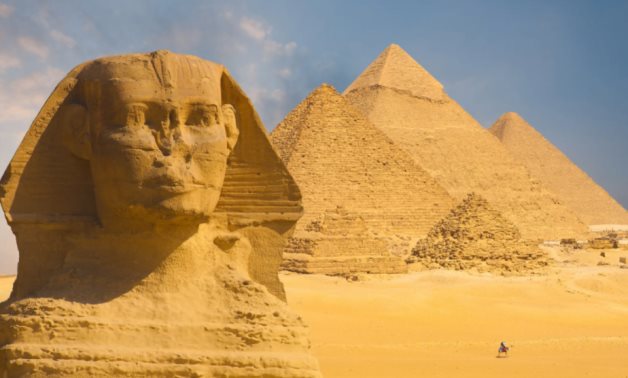With its vast landscapes and fearsome animal life, the African continent has become in this new digital era, a field of application for photographers. Sometimes lost in certain places that have hardly changed for centuries and even millennia, the continent offers tourists and landscapers special sources of inspiration. Here are Afrotribune’s top 13.
Algeria: The Gate of the Jinn – Unveiling the Forgotten City in the Depths of the Desert

They call it: ‘The Gate of the Jinn’ and the Eighth Wonder of the World. Many mysteries surround numerous places around the world, some of which are steeped in legends, while others have been explored. However, their enigmatic nature remains unsolvable for many! Algeria, perhaps, sits on the throne of that list, as it boasts numerous captivating locations and picturesque islands.

The Great Migration, Tanzania

A photo really won’t be able to capture the horde of hooves on the dirt as more than a million wildebeest and several hundred thousand zebra make their annual migration. The migration is actually an annual event as the animals leave the Ngorongoro Game Reserve in Tanzania in January, travel up the Serengeti around June and reach the Masai Mara in Kenya in September, before heading south again.
Table Mountain, South Africa

Table Mountain makes Cape Town one of the best coastal cities in the world and one of the most photogenic. Cable car rides are available to the top of the mesa, offering great views, fantastic sunrises and sunsets.
Djmaa el Fna, Morocco

One of the most exciting squares in the world, Djmaa el Fna reminds you that you are in Africa. In the heart of Marrakech’s old town, snake charmers, henna painters, storytellers, date sellers and orange juice vendors set up their stalls in the afternoon heat.
As night falls, vendors are accompanied by tribal drums, ladyboy dancers and street vendors selling delicious grilled meats, breads and salad as smoke rises above their stalls until midnight.
Sossusvlei Dunes, Namibia

In Namibia, Sossusvlei means “the gathering place of water”. However, you will need to bring something to quench yourself if you do not want to get dehydrated. In fact, the dunes of Sossusvlei are probably Namibia’s most remarkable attraction. They have developed over millions of years. Climbing these dunes yields breathtaking views, including the Deadvlei, a ghostly expanse of dried white clay punctuated by skeletons of ancient camelthorn trees.
Mountain gorillas, Rwanda

A close encounter with the mountain gorillas of the Rwandan rainforest will stay with you for a lifetime. Several operators organize tracking tours of the silverbacks and their troops in the dense forest.
Victoria Falls, Zambia and Zimbabwe
 One of the most majestic water shows in the world, Victoria Falls (also called Mosi-oa-Tunya) is said to have been first seen in 1855 when Scotsman David Livingstone visited it.
One of the most majestic water shows in the world, Victoria Falls (also called Mosi-oa-Tunya) is said to have been first seen in 1855 when Scotsman David Livingstone visited it.
Since then, thousands of people have enjoyed the spray from the 108-meter-high waterfall, which was once 12,800 cubic meters per second, twice Niagara’s highest rate.
Spitzkoppe, Namibia
 The Spitzkoppe features various granite peaks in the Namibian desert, with the highest peak reaching nearly 1,800 meters.
The Spitzkoppe features various granite peaks in the Namibian desert, with the highest peak reaching nearly 1,800 meters.
Sahara Dunes, Morocco

Whether you do it or admire it, you will be impressed. The friendliest part of the Sahara is accessible from the northern edge of Morocco. You can trek with the Berbers in the town of Zagoura, or camp in Tazzarine where runners from all over the world complete the Marathon des Sables every week.
The foot of the Dunes of Merzouga is the ideal place to observe the stars, without any light pollution.
Pyramids of Giza, Egypt

The most famous of the structures in Giza, near Cairo, the Pyramid of King Cheops was built around 2650 BC. AD from 2.5 million blocks of limestone. Its sides are oriented exactly to the north, south, east and west.
The Pyramid of Chephren, built by the son of Cheops, is similar in size and incorporates the entrances to a burial chamber which still contains the large granite sarcophagus of King Chephren.
The pyramid of Mycerinus is smaller than the two and the three are surrounded by other smaller pyramids and dozens of tombs.
Nyika Plateau National Park, Malawi

Nyika, Malawi’s largest park, is one of the most unusual in Africa, with a plateau cut by numerous rivers that reach Lake Malawi through waterfalls off the eastern edge of the mountains.
The eastern edge of the plateau forms the wall of the Great Rift Valley. The large hill domes have gentle slopes making Nyika perfect for hiking and mountain biking as well as Jeep exploration.
Antelope and zebra abound, and this park with one of the highest leopard densities in Central Africa.
The Pans, Botswana

Legends say you can hear your own blood flow in this vast area of dried up salt flats in the Kalahari Desert, a landscape formed by a huge lake that dried up millennia ago. But it can turn in an instant during the winter, if the rains have been good enough to sprout the lush grass, bringing a rush of wildlife to break the silence, including zebras, wildebeests and flamingos. .
Draa Valley, Morocco

Between the Atlas Mountains and the dunes of the Sahara lies one of Morocco’s most magnificent and rewarding landscapes: the Drâa, a mass of date palms punctuated with spurred red earth kasbahs rising against the sky .
Zagora at the southern end makes a good base with decent hotels and restaurants. Allow five hours to reach the Draa from Marrakech via a dramatic drive through the Atlas Mountains, best not to drive yourself.
Sphinx, Egypt

This colossal temple is on the way to the Valley Lodge of King Chefren. This body of a lion with a human head is 70 meters long and 20 meters high, as tall as a six-story building.
Although the Sphinx was thought to be female, many scholars believe the face is that of King Chefren.
Did you like this article? Do not hesitate to share it on social networks and subscribe to Discover the World on Google News to not miss any articles!